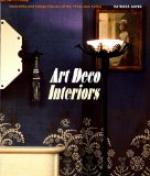Refuse to accept a colour scheme, unless it appeals to your individual taste—no matter who suggests it. To one not very sensitive to colour here is a valuable suggestion. Find a bit of beautiful old silk brocade, or a cretonne you especially like, and use its colour combinations for your room—a usual device of decorators. Let us suppose your silk or cretonne to have a deep-cream background, and scattered on it green foliage, faded salmon-pink roses and little, fine blue flowers. Use its prevailing colour, the deep cream, for walls and possibly woodwork; make the draperies of taffeta or rep in soft apple-greens; use the same colour for upholstery, make shades for lamp and electric lights of salmon-pink, then bring in a touch of blue in a sofa cushion, a footstool or small chair, or in a beautiful vase which charms by its shape as well by reproducing the exact tone of blue you desire. There are some who insist no room is complete without its note of blue. Many a room has been built up around some highly prized treasure,—lovely vase or an old Japanese print.
A thing always to be avoided is monotony in colour. Who can not recall barren rooms, without a spark of attraction despite priceless treasures, dispersed in a meaningless way? That sort of setting puts a blight on any gathering. “Well,” you will ask, “given the task of converting such a sterile stretch of monotony into a blooming joy, how should one begin?” It is quite simple. Picture to yourself how the room would look if you scattered flowers about it, roses, tulips, mignonette, flowers of yellow and blue, in the pell-mell confusion of a blooming garden. Now imitate the flower colours by objets d’art so judiciously placed that in a trice you will admire what you once found cold. As if by magic, a white, cream, beige or grey room may be transformed into a smiling bower, teeming with personality, a room where wit and wisdom are spontaneously let loose.
If your taste be for chintzes and figured silks, take it as a safe rule, that given a material with a light background, it should be the same in tone as your walls; the idea being that by this method you get the full decorative value of the pattern on chintz or silk.
Figured materials can increase or diminish the size of a room, open up vistas, push back your walls, or block the vision. For this reason it is unsafe to buy material before trying the effect of it in its destined abode.
Remember that the matter of background is of the greatest importance when arranging your furniture and ornaments. See that your piano is so placed that the pianist has an unbroken background, of wall, tapestry, a large piece of rare old sills, or a mirror. Clyde Fitch, past-master at interior decoration, placed his piano in front of broad windows, across which at night were drawn crimson damask curtains. Some of us will never forget Geraldine Farrar, as she sat against that background wearing a dull, clinging blue-green gown, going over the score,—from memory,—of “Salome.”




